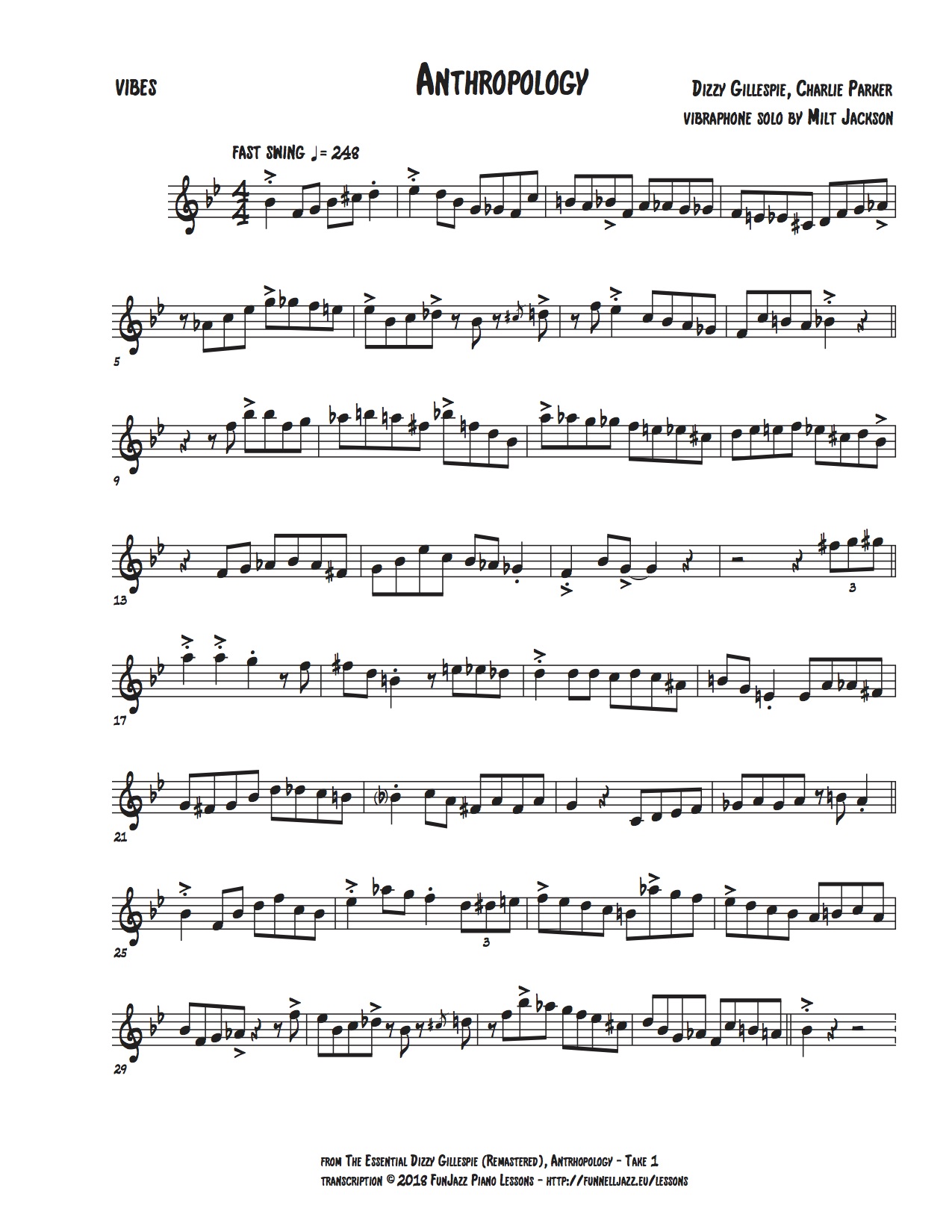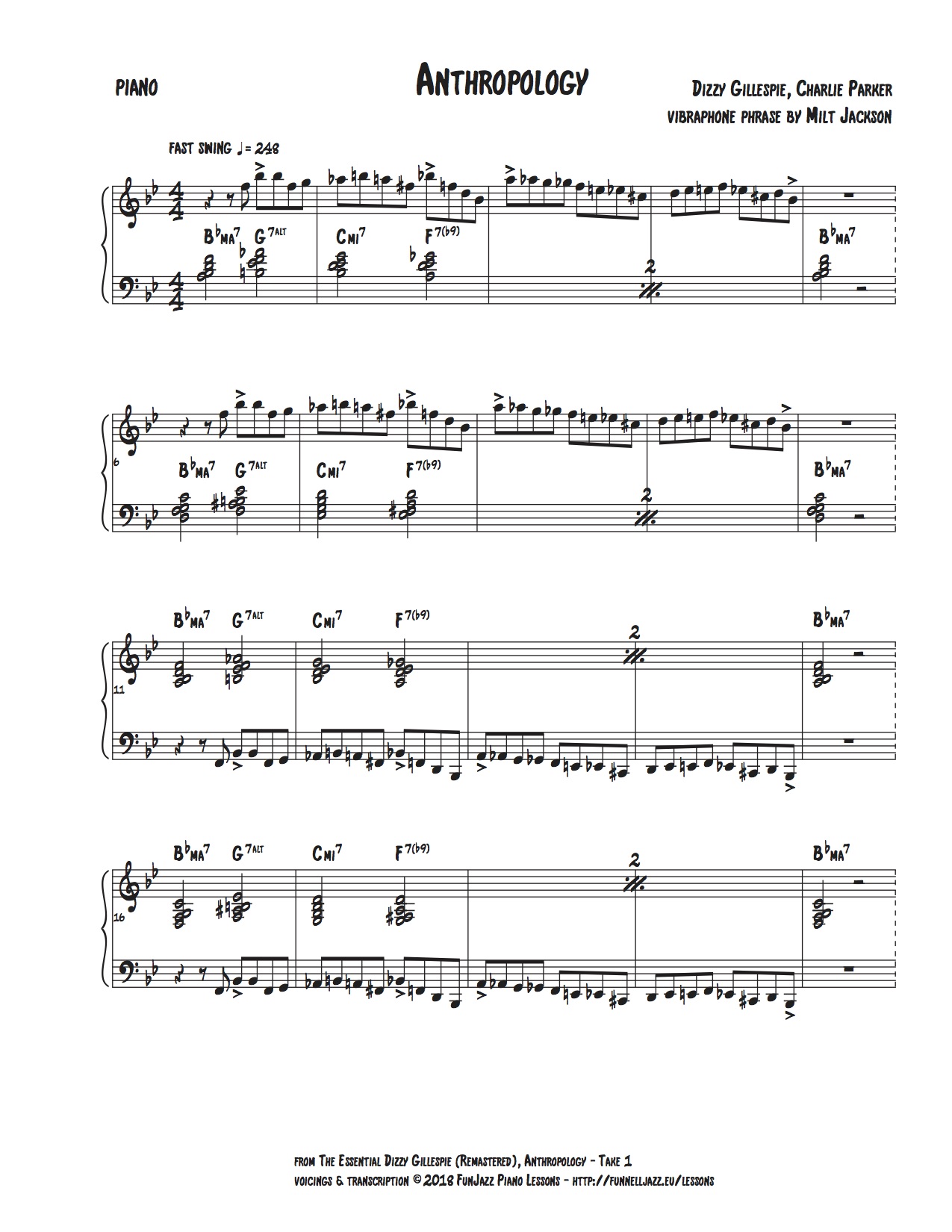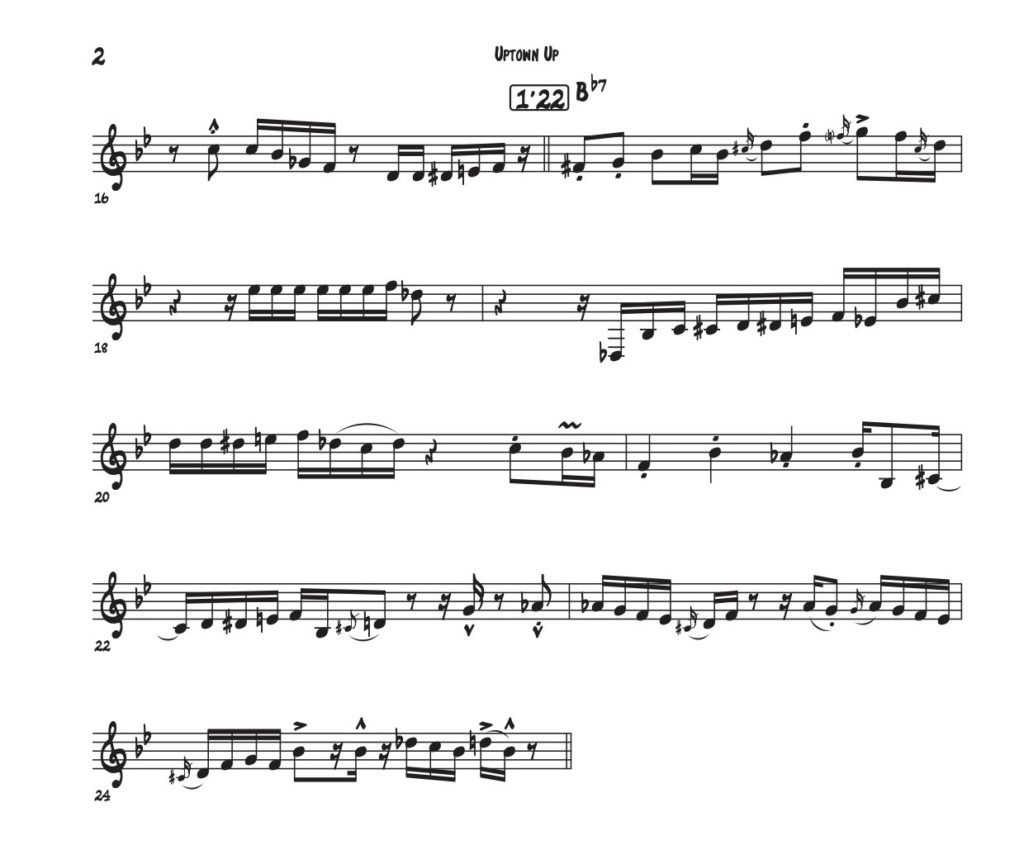I recently stumbled upon an excellent article on Jazz Advice about jazz language. In short, it’s about the importance of learning it!
Jazz is indeed a language. When children learn a language, they listen, pick out their favorite words, and repeat what they hear… Over and over again! We jazz musicians can totally take example from these kids in order to improve our knowledge of – and fluency in – the language of jazz. Of course, the repeating part will involve transposing as well, and that’s where the fun really starts!
So I’ve decided to regularly transcribe some of my favorite solos, pick my favorite phrases, and share my findings with you on here. I hope you’ll enjoy them! Today, let’s start with Milt Jackson’s vibraphone solo on Anthropology.
It’s always nice to practice rhythm changes with its characteristic I-VI-II-V progression (in fact Ima7-V7alt/II-IImi7-V7(b9) in this particular case) since it’s such a common harmonic pattern in jazz.

The one phrase that really stuck out for me is played in bars 9 to 12. I like it because it has some cool non-diatonic action in bar 10. Here’s how I practiced it both in my right and left hands, using two different kinds of voicings for the accompanying hand (“positions A and B” as Mark Levine puts it in his Jazz Piano Book). The example is in Bb major, the original key. As stated before, it’s essential to take it fully around the cycle of 5ths in order to make sure to really internalize the phrase and the chords in all keys. Just be mindful of low interval limits when playing the chords in the left hand.

The use of anticipation in the second bar of Milt’s phrase is remarkable: the first four eighth notes (Ab B A F#) are all part of the half-whole scale based on F, which is the scale we would use over F7(b9). The second set of eighth notes (Bb F D Bb) is simply a descending triad outlining the upcoming Bbma7 sound in the third bar.
It’s also interesting to note that in one of the positions, the G7alt voicing can be thought of as Fmi7(b5)/G (bars 1 & 11). That means you can play a mi7(b5) chord a whole step below the root of any altered chord, and you’ve instantly got yourself a cool voicing for it!
Similarly, in the other position, the G7alt voicing resembles a Bma7(b5)/G (bars 6 & 16). So it’s also an option to play a ma7(b5) chord a major third above the root of any altered chord to get the desired altered sound.
Visit http://funnelljazz.eu/lessons/ for detailed information about lessons or click on the image below to book your lesson today:



